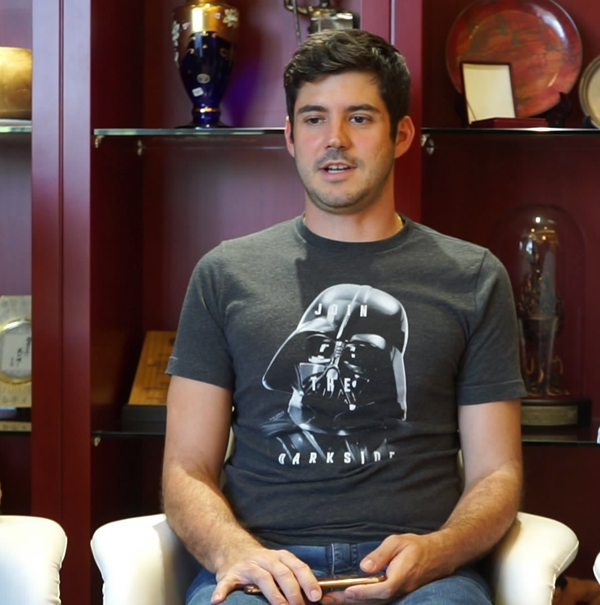
2019-5-17
By:Zheng Qian
Amid the rising global popularity of traditional Chinese medicine (TCM) treatment, more and more international students are coming to China to learn this classical knowledge. Tarik Juliani is one of those foreigners who is pursuing the dream of being a Chinese medicine doctor.

Tarik has an interview with Eastday. [Photo/ eastday.com]
For the 32-year-old Brazilian student, Tarik, China was a new start. He came to Shanghai to study Chinese medicine in 2017, since he believed western medicine was not the best way to treat patients and knew that Chinese medicine is being used by more and more people in Brazil. “TCM was introduced to Brazil almost 70 years ago. It was first utilized by physiotherapists and then it started to spread to other schools like psychology and physical education. Nowadays it is widely spread.”
In 2006, the Brazilian Ministry of Health issued a 971 bill, which included four natural therapies -- acupuncture, herbal medicine, homeopathy and warm baths into the Brazilian medical insurance system, so Chinese medicine treatment officially entered Brazilian public hospitals.
There are also many people in Brazil studying Chinese medicine. The Brazilian College of Traditional Chinese Medicine has nearly 1,500 students, 77% of which are female, and 83% are over 31 years old. They have previously obtained an undergraduate or master's degree or, like Tarik, resigned their job to study Chinese medicine for the purpose of changing their life and others.
In São Paulo, where Tarik comes from, there are tens of thousands of acupuncturists, and Brazil’s first Chinese Academy of Acupuncture and Moxibustion, the Brazilian Traditional Chinese Medicine Acupuncture Society, was born here in 1983.
However, Tarik prefers to learn Chinese medicine in China. Although the language barrier troubles him, his belief in healing and saving people has always supported him. “It’s a gift to heal people. If I go back to Brazil, I want to open a healing center in a place close to nature to really treat the patients, but not just to relieve the pain or relax them. For the future development of Chinese medicine in the world,” he said. "China has invested a lot to make TCM more popular. To make Chinese medicine more accepted, China should make TCM a science. That’s a problem.”
Indeed, as Tarik said, the formation of standards and rules that are common to the entire international market is essential for the internationalization of Chinese medicine. In recent years, China has been exerting efforts in TCM standardization. As the world's largest international standard-setting body, the International Organization for Standardization (ISO) established the Chinese Medicine Technical Committee (ISO/TC249) in September 2009. Up to now, ISO/TC249 has officially issued 41 international standards for Chinese medicine, and 46 international standards are being formulated.
Hopefully, as Chinese medicine is more maturely standardized and with the efforts of international students like Tarik, it will be more widely used globally.